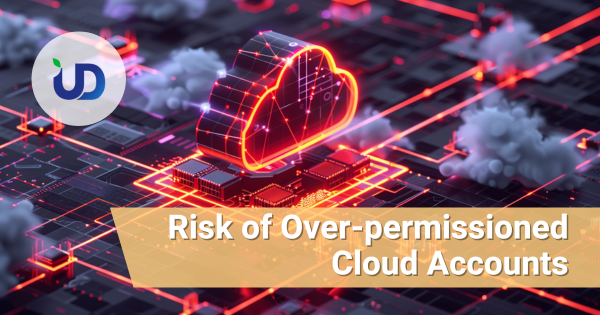Why Over-Permissioned Cloud Accounts Are a Silent Threat to Your Entire Security Posture
Modern organisations are moving more workloads into the cloud than ever before. But while cloud platforms promise scalability and speed, they also introduce new types of risks that are far less visible to traditional security teams. One of the most underestimated risks is the rise of over-permissioned cloud accounts—users, services, or applications with far more access rights than they should ever need.
This issue may sound simple, but it has become a leading cause of cloud breaches worldwide. In fact, attackers increasingly rely on misconfigured or excessive permissions instead of complicated exploits. Understanding why this happens—and how to fix it—can dramatically strengthen your cloud security posture.
What Are Over-Permissioned Cloud Accounts?
Cloud platforms such as AWS, Azure, and Google Cloud use Identity and Access Management (IAM) policies to determine what an account can or cannot do. When an account is “over-permissioned,” it means it has access to far more actions, services, or data than required for its role.
This usually begins innocently. A developer asks for temporary access, a new service role is given “broad” permissions for convenience, or a legacy application gets upgraded without updating its IAM policies. Over time, these permissions accumulate, and the organisation slowly drifts into a state where many accounts hold unnecessary or dangerous privileges.
Even worse, these permissions often go unnoticed—until an attacker abuses them.
Why Over-Permissioned Accounts Are So Dangerous
The danger lies in how attackers exploit the cloud. Unlike traditional networks, cloud platforms are identity-driven. This means that who you are and what permissions you hold determine the entire scope of potential damage.
If an attacker compromises a highly privileged account, they can often:
Move laterally between cloud services
Access sensitive business data
Spin up or shut down virtual machines
Modify firewall or security group rules
Create backdoor accounts
Delete logs to hide their traces
In many real-world breaches, attackers did not rely on zero-days or advanced exploits—they simply logged in using valid credentials and abused the permissions that were already there. This identity-first attack pattern makes over-permissioned accounts one of the easiest yet most impactful vulnerabilities for cybercriminals to take advantage of.
How Over-Permissioning Happens Without Anyone Noticing
Over-permissioning rarely happens in one big mistake. Instead, it is a slow accumulation of small, convenient decisions made over months or years. Teams are busy, new cloud services launch every week, and IAM policies become increasingly complex.
Many organisations fall into the same patterns:
Developers ask for broad access to “speed up development”
Temporary access is granted but never revoked
Cloud roles or service accounts are cloned from overly privileged templates
Third-party integrations request extensive API permissions
Audit teams lack visibility into cross-cloud permission structures
No one owns the responsibility of continuously reviewing IAM policies
This phenomenon is known in the security world as permission creep, and it is one of the most common symptoms of weak cloud governance.
Real Business Impact: How an Over-Permissioned Account Leads to a Full Cloud Takeover
An over-permissioned account often serves as a single point of failure. When compromised, it can escalate into a full-blown incident because cloud platforms allow actions at massive scale with just a few API calls.
Here’s how a typical attack chain unfolds:
An attacker steals credentials through phishing or an exposed token
They authenticate successfully since MFA or conditional access is missing
They discover excessive permissions through APIs
They exfiltrate sensitive data from storage buckets
They elevate privileges by modifying IAM roles
They erase CloudTrail or audit logs
They persist for months without being detected
The consequences include financial loss, compliance violations, downtime, and damage to customer trust—all caused by a single identity with too much power.
How to Reduce the Risk: A Practical Guide to Rightsizing Cloud Permissions
Solving the over-permissioning problem requires shifting from “trust everyone” to “least privilege.” The principle is simple: every account should have only the minimum permissions needed to perform its role.
Start by reviewing your existing IAM structure and mapping out the accounts that have admin-level or wildcard permissions. These are the accounts that attackers would target first. Then gradually work toward rightsizing each role by removing unused permissions.
Using automated tools also helps. Most modern cloud security platforms, including CSPM (Cloud Security Posture Management) and CIEM (Cloud Infrastructure Entitlement Management) tools, provide visibility into permissions, detect risky privilege combinations, and suggest safer policies. If your organisation lacks the expertise or resources, managed security services (MSSP) or cloud security reviews can uncover invisible risks and correct them before attackers find them.
Conclusion: Identity Is the New Cloud Perimeter
As cloud environments become more complex, traditional perimeter security no longer protects what matters most—your identities and the permissions tied to them. Over-permissioned cloud accounts remain one of the biggest contributors to misconfiguration-based breaches, and solving this issue requires continuous review, visibility, and governance.
By treating permissions as a critical security asset, organisations can dramatically reduce the blast radius of any potential breach. Whether through automated permission management, regular security assessments, or professional pentesting and cloud review services, eliminating over-permissioned accounts is one of the strongest steps you can take to protect your cloud environment.
🛡️ Ready to Strengthen Your Security?
UD is a trusted Managed Security Service Provider (MSSP)
With 20+ years of experience, delivering solutions to 50,000+ enterprises
Offering Pentest, Vulnerability Scan, SRAA, and a full suite of cybersecurity services to protect modern businesses




